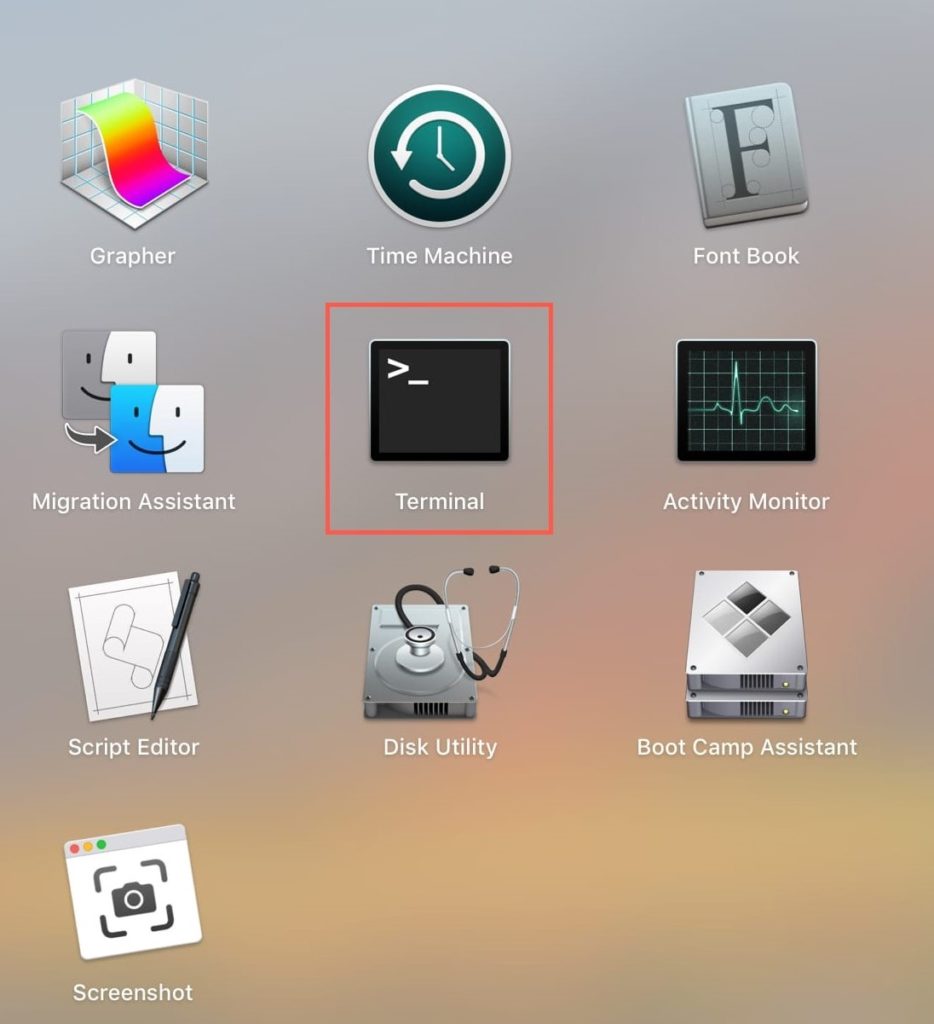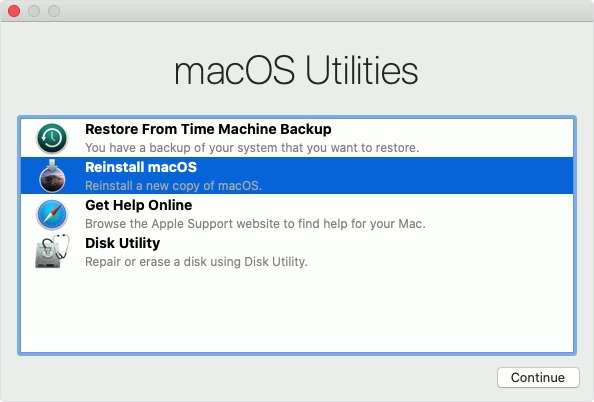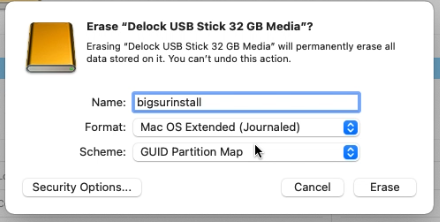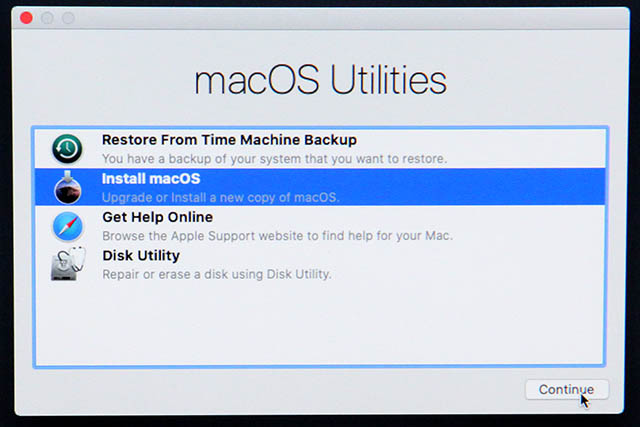Have you been trying to fix the Recovery Mode that’s not working on your Mac?
Mac’s Recovery Mode is the go-to troubleshooter for many users. Whether they’re trying to repair a hard disk, reinstall macOS, or fix a stubborn problem, booting into Recovery Mode is often a huge help. But what if Recovery Mode isn’t working for you?
There could be different causes behind this issue. You may have used an incorrect keyboard shortcut. Perhaps, you’ve accidentally deleted the recovery partition. On rare occasions, Recovery Mode is inaccessible because Mac’s disc is beyond repair.
Whatever the cause, we’re here to help. We have listed tons of ways to resolve this issue and help you get back to using your iMac or Macbook with ease again. Here’s how to fix Recovery Mode not working on Mac.
Let’s jump in!
1. Do Basic Troubleshooting to Fix Recovery Mode Not Working on Mac.
Sometimes, the Recovery Mode issue is due to a simple error. Maybe, you have a faulty keyboard or an old macOS version. Before you move on to other fixes, it pays to do basic troubleshooting. The methods below may be enough to resolve your issue.

Here are some basic troubleshooting tips to fix ill-functioning Recovery Mode on Mac:
- Check if you have a Mac with a T2 security chip: It’s efficient to use a keyboard shortcut to boot into Recovery Mode. Keep in mind, though, that Command +R doesn’t work on a Mac with a T2 chip. Got an iMac or Macbook with a T2 chip? Use this shortcut instead: Option/Alt + Command + R.
- Inspect your keyboard: Ensure that your keyboard isn’t faulty. Try to connect an external keyboard and type the correct shortcut to boot your Mac into Recovery Mode. See if your existing Mac keyboard is the problem.
- Check your macOS version: Do you have a Mac running on macOS El Capitan or Yosemite? macOS versions older than Sierra don’t have all the Recovery options. That could explain why you couldn’t boot your computer into Recovery.
2. Check If Your Mac Has a Recovery Partition.
Macs from 2011 and later have a built-in Recovery Partition. It is a separate section of the hard drive that users can boot into if they need to repair disks or reinstall their macOS. They also have Safari that allows you to go online and get help from Apple Support.
If you suddenly can’t boot into the Recovery Mode, you might have accidentally deleted Recovery Partition while replacing a hard drive or reinstalling macOS. Luckily, you can check if your Mac has Recovery Partition through the Terminal app.
Here’s how to use Terminal to check if your Mac still has Recovery Partition:
- First, launch Finder on your Mac.
- Look at the sidebar menu and select Applications.
- Now, click Utilities and then, select Terminal.

- On the Terminal window, enter this command:
diskutil list- You’ll see a list of partitions for each disk. Look for one named “Recovery.”
- If you don’t see a partition with that name, don’t fret. You can restore the Recovery Partition by resetting PRAM or updating macOS. Check out the steps below.
Here’s how to reset PRAM to restore a missing Recovery Partition:
- First, shut down your Mac.
- Switch it back on and then quickly press and hold this key combination: Option + Command + P + R. Wait for about 20 seconds before releasing these keys.

- Your Mac will restart. Run the Terminal app or follow the steps above again to check if you’ve successfully restored the Recovery Partition on your Mac.
Another way to restore the Recovery Partition is to update macOS. Here’s how to do it:
- First, go to the Apple menu.
- Then, select About This Mac.
- Finally, click Software Update to install any available updates.
3. Activate Internet Recovery as a Workaround.
Were you able to restore the Recovery Partition or fix your keyboard issues? Then, you should now be able to boot your Mac into Recovery Mode. Otherwise, try alternative options. One thing to try is activating the Internet Recovery Mode to reinstall your macOS.
Newer Macs can boot directly from an internet connection, even if the Recovery partition is missing. Note, however, that Internet Recovery only works with networks utilizing WEP and WPA security. That’s fine if you’re connected to Wi-Fi. If you’re on PPPoE or a proxy network, find a Wi-Fi network before using Internet Recovery Mode.
Here’s how to boot your Mac into Internet Recovery Mode:
- First, shut down your computer.
- Then, press and hold down this key combination: Command + Option/Alt + R + Power.
- Keep on pressing these keys until you see a spinning globe on the screen. That globe comes with a message about Internet Recovery starting to launch.
- After a while, a progress bar will replace the globe and message.
- Wait for the progress bar to fill and the macOS Utilities screen to appear.
- Lastly, click Reinstall macOS. Follow the on-screen instructions to complete it. Reinstalling macOS won’t only restore Recovery Partition but also fixes other issues that have prompted you to boot into Recovery Mode in the first place.

4. Create a Bootable Installer Instead.
If your Mac has no Recovery Partition and you can’t access Internet Recovery Mode, then you’re left with one last option. That is to create a bootable installer. You need a flash drive with at least 12GB of storage. If the USB flash drive has existing files, back them up as they will be deleted once you format it to be a bootable installer.
Also, you need access to the macOS Install files for the macOS version you want to reinstall. Open your Applications folder to find the Install files. If you can’t find them, you can download them from the Mac App Store before following the steps below.
Here’s how to create a bootable installer:
- First, connect your USB flash drive to your computer.
- Open Disk Utility.
- Then, select the root drive in the sidebar and hit Erase.
- Now, format the drive and select Mac OS Extended (Journaled) as the format. For the scheme, click GUID Partition Map.

- Then, click Erase again to complete the formatting of the USB flash drive.
- Now, open Finder and click Applications on the sidebar.
- Then, select Utilities. Find and launch the Terminal app.
- Enter the following command to reinstall Big Sur on your Mac:
sudo /Applications/Install\ macOS\ Big\ Sur.app/Contents/Resources/createinstallmedia --volume /Volumes/MyVolumeNote: For other macOS versions, replace “Big\Sur.app” with “Catalina.app” or “High\Siera.app.”
- When prompted, type your admin password. Then, enter “y” to continue wiping the flash drive and turning it into a bootable installer.
- Lastly, wait for the process to finish before ejecting the flash drive.
5. Use a Bootable Installer to Fix Recovery Mode Not Working on Mac.
Once you’ve created a bootable installer, you can use it to reinstall macOS. New macOS installation means your Mac will have a working Recovery partition again. That should be able to fix the issue of Recovery Mode not working on your Mac.
Here’s how to use a bootable installer to reinstall macOS and restore Recovery Mode:
- First, connect the bootable installer to your Mac.
- Restart your Mac. Then, immediately hold down the Option/Alt key. Keep pressing until you see the bootable volume on the screen.
- Now, select the bootable installer volume. Then, click Continue.
- Next, the Utilities window will appear. Click Install macOS and hit Continue.

- Finally, follow the on-screen instructions to complete the process.
Once the process is complete and your computer is back on, try to boot it into the Recovery Mode. See if you can finally do it. Also, check the issue that has prompted you to boot into the Recovery Mode in the first place. See if it’s already resolved.
That wraps up this guide. Hopefully, one or two of these methods have helped fix the issue of Recovery Mode not working on your Mac. Got other Mac-related problems? Don’t hesitate to leave a comment below. We’ll try to address those issues in our next posts.
If this guide helped you, please share it. 🙂





